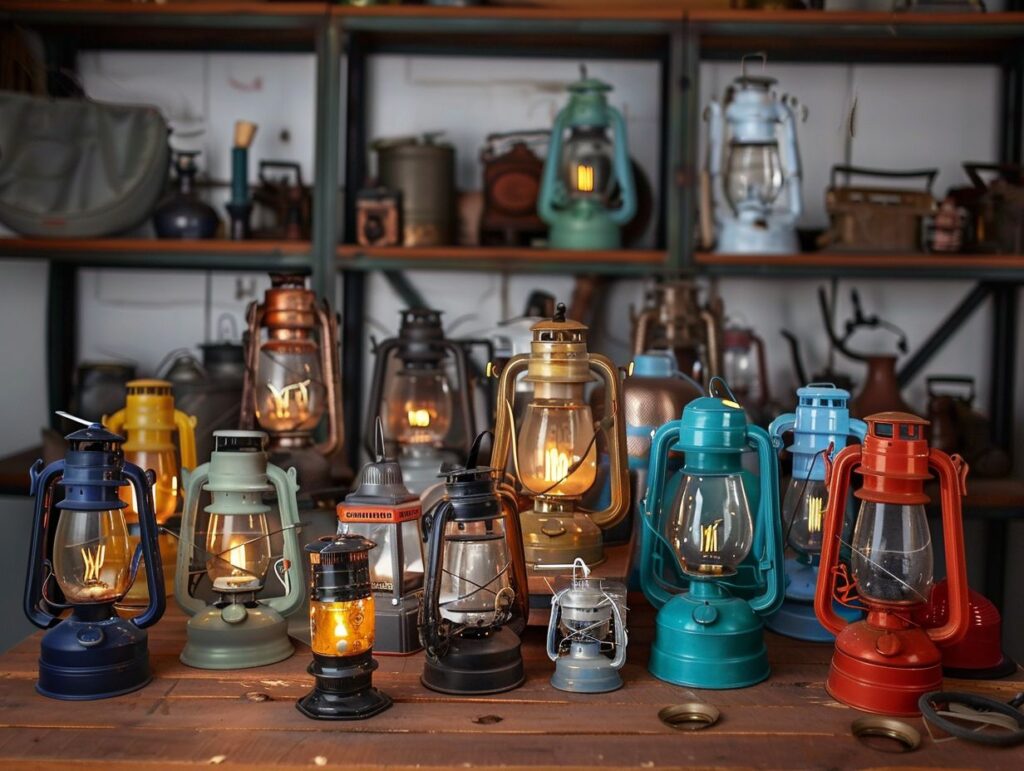Uncategorized
How to Choose the Best Camping Lantern for Night-Time Illumination
Camping is a fantastic way to reconnect with nature and unwind from the hustle and bustle of everyday life. One of the most important aspects of a successful camping experience is having reliable lighting, especially when the sun goes down. Whether you’re cooking, reading, or simply enjoying the tranquility of the outdoors, a good camping lantern can make all the difference. But with so many options available on the market, how do you choose the best one for your needs? In this guide, we’ll break down the key factors to consider when selecting a camping lantern to ensure your nights are well-lit and enjoyable.
1. Types of Camping Lanterns
When it comes to camping lanterns, there are three main types: battery-powered, rechargeable, and gas lanterns. Each type has its own pros and cons, depending on your preferences and needs.
- Battery-Powered Lanterns: These lanterns are powered by replaceable or rechargeable batteries. They are convenient and easy to use, especially for short camping trips. Battery-powered lanterns come in various sizes, and their brightness can range from a soft glow to a more intense beam. However, they can be less reliable on long trips if you don’t have extra batteries.
- Rechargeable Lanterns: Powered by lithium-ion or similar rechargeable batteries, these lanterns are an eco-friendly option and cost-effective in the long run. You can recharge them at home before your trip, and many modern models offer USB charging, allowing you to power up using portable chargers or solar panels while you’re camping. Rechargeable lanterns are perfect for multi-day trips.
- Gas Lanterns: Gas lanterns are powered by propane or butane fuel, offering a strong and consistent light output. They are often favored for their reliability and long burn times, but they can be bulkier and heavier compared to battery-powered models. Gas lanterns are ideal for car camping, where weight and space are less of a concern.

2. Brightness (Lumens)
Brightness is one of the most important features to consider when choosing a camping lantern. Measured in lumens, brightness determines how much light the lantern can produce. The higher the lumen count, the brighter the light.
For general camping use, a lantern with 200 to 400 lumens should be sufficient. This level provides enough illumination for cooking, reading, or socializing around the campsite. However, if you need more intense lighting for larger areas, such as a group campsite, look for a lantern with 500 to 1000 lumens or more. Keep in mind that excessive brightness can also cause discomfort, so it’s best to choose a lantern with adjustable brightness settings.
Many modern lanterns feature dimming options or multiple lighting modes (e.g., low, medium, high), allowing you to customize the brightness according to your needs. This can help conserve battery life and reduce eye strain during extended use.
3. Burn Time
Another important consideration is the burn time, or how long the lantern can provide light before the power source (batteries or gas) is depleted. A longer burn time is essential for multi-day trips or if you need the lantern to last through the night.
- Battery-Powered Lanterns: The burn time for battery-powered lanterns can vary significantly depending on the brightness setting and battery type. For example, a lantern with 4 AA batteries might last anywhere from 10 to 50 hours at lower brightness settings, but will need battery replacements or recharging before your trip is over.
- Rechargeable Lanterns: Rechargeable lanterns typically offer between 6 to 12 hours of light at full brightness, and 20+ hours at lower settings. The burn time will vary depending on the battery capacity, and it’s important to choose a model with a recharge time that fits into your camping routine.
- Gas Lanterns: Gas-powered lanterns often provide up to 12 hours of continuous light, depending on the fuel canister size. If you’re using propane or butane lanterns, it’s crucial to bring extra fuel canisters for extended use.

4. Size and Weight
The size and weight of the lantern are essential factors, especially if you’re backpacking or trying to minimize the amount of gear you carry. Generally speaking, battery-powered and rechargeable lanterns are more compact and lightweight than gas lanterns.
- Compact and Lightweight: If you’re embarking on a backcountry camping trip, opt for a small, lightweight lantern. These models are easier to carry and take up less space in your backpack.
- Larger Lanterns for Car Camping: For car camping, weight and size are less of a concern, so you can afford to choose a larger, more powerful lantern with extra features like a handle or collapsible design for ease of storage.
5. Durability and Weather Resistance
Camping conditions can be harsh, so it’s important to choose a lantern that can withstand the elements. Look for lanterns that are water-resistant or even waterproof to ensure they continue to perform in rain or damp conditions.
Many lanterns are rated with an IPX rating, which indicates their water resistance. For example, an IPX4 rating means the lantern is resistant to water splashes from any direction, while an IPX7 rating indicates that it can be submerged in water up to 1 meter deep for 30 minutes.
Additionally, consider the lantern’s build quality. Models made of rugged plastic or aluminum are more durable and can handle the bumps and drops of outdoor adventures.
6. Lighting Features and Extras
In addition to basic brightness, there are several other features that can enhance your camping lantern experience. Some of these include:
- Dimming and Adjustable Brightness: Look for lanterns with adjustable brightness or dimming functions for more control over the light intensity.
- Multiple Light Modes: Some lanterns offer multiple lighting modes, such as a flashlight mode, strobe setting, or warm/cool light settings for added versatility.
- Built-in USB Ports: Certain rechargeable lanterns have USB ports for charging your phone or other small electronics, which can be a lifesaver in emergencies or if you’re on an extended camping trip.
- Hanging Hook: Many camping lanterns come with a hook or handle for easy hanging, which can help illuminate your tent or campsite without needing to place the lantern on the ground.
- Color Options: Some lanterns offer color-changing lights that can set the mood for your campsite or preserve your night vision with a red light option.
7. Price and Value for Money
Camping lanterns come in a wide range of prices, depending on the type, size, and features. While you don’t need to go for the most expensive option, it’s worth investing in a reliable lantern that meets your specific needs. Consider how often you’ll use the lantern, the features you value, and the long-term cost of maintaining the lantern (such as replacing batteries or purchasing fuel).
Conclusion
Choosing the best camping lantern for night-time illumination depends on several factors, including the type of lantern, brightness, burn time, size, durability, and additional features. Whether you’re a casual camper or a seasoned adventurer, there is a lantern out there that suits your needs perfectly. Take into account your camping style, trip duration, and the conditions you might face, and you’ll find the ideal lantern to light up your nights under the stars. Happy camping!

